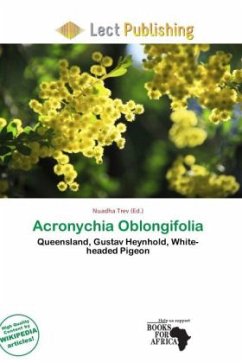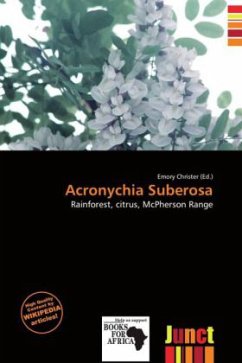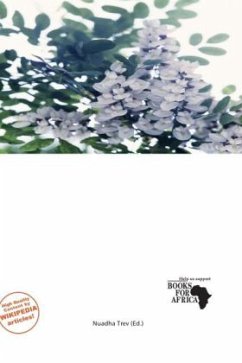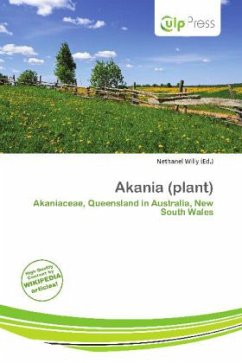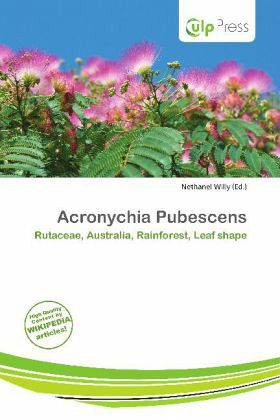
Acronychia Pubescens
Rutaceae, Australia, Rainforest, Leaf shape
Herausgegeben: Willy, Nethanel
Versandkostenfrei!
Versandfertig in 6-10 Tagen
19,99 €
inkl. MwSt.

PAYBACK Punkte
10 °P sammeln!
Please note that the content of this book primarily consists of articles available from Wikipedia or other free sources online. The leaves usually form in threes, occasionally in ones or twos. The compound leaves are arranged oppositely on the stem. The leaf stem is between 0.8 and 8 cm long. Leaflets are 5.5 to 22 cm long and 1.8 to 7.7 cm wide, without leaf stems. They are in shape, with a blunt point, though occasionally the point will be sharper; the top surface of the leaflets is downy, particularly along the mid-rib, but they are hairier under the leaf. Oil dots are not visible. Leaf vei...
Please note that the content of this book primarily consists of articles available from Wikipedia or other free sources online. The leaves usually form in threes, occasionally in ones or twos. The compound leaves are arranged oppositely on the stem. The leaf stem is between 0.8 and 8 cm long. Leaflets are 5.5 to 22 cm long and 1.8 to 7.7 cm wide, without leaf stems. They are in shape, with a blunt point, though occasionally the point will be sharper; the top surface of the leaflets is downy, particularly along the mid-rib, but they are hairier under the leaf. Oil dots are not visible. Leaf veins easily noticed, particularly under the leaf. The mid-rib is usually sunken on the top side, and all veins raised under the leaf. The greenish fawn flowers form from March to June in lateral or axillary . The cymes are around 25 cm (10 in) long, and individual flowers are hairy and 8 mm long. The hairy leaves distinguish them from other members of the genus.



